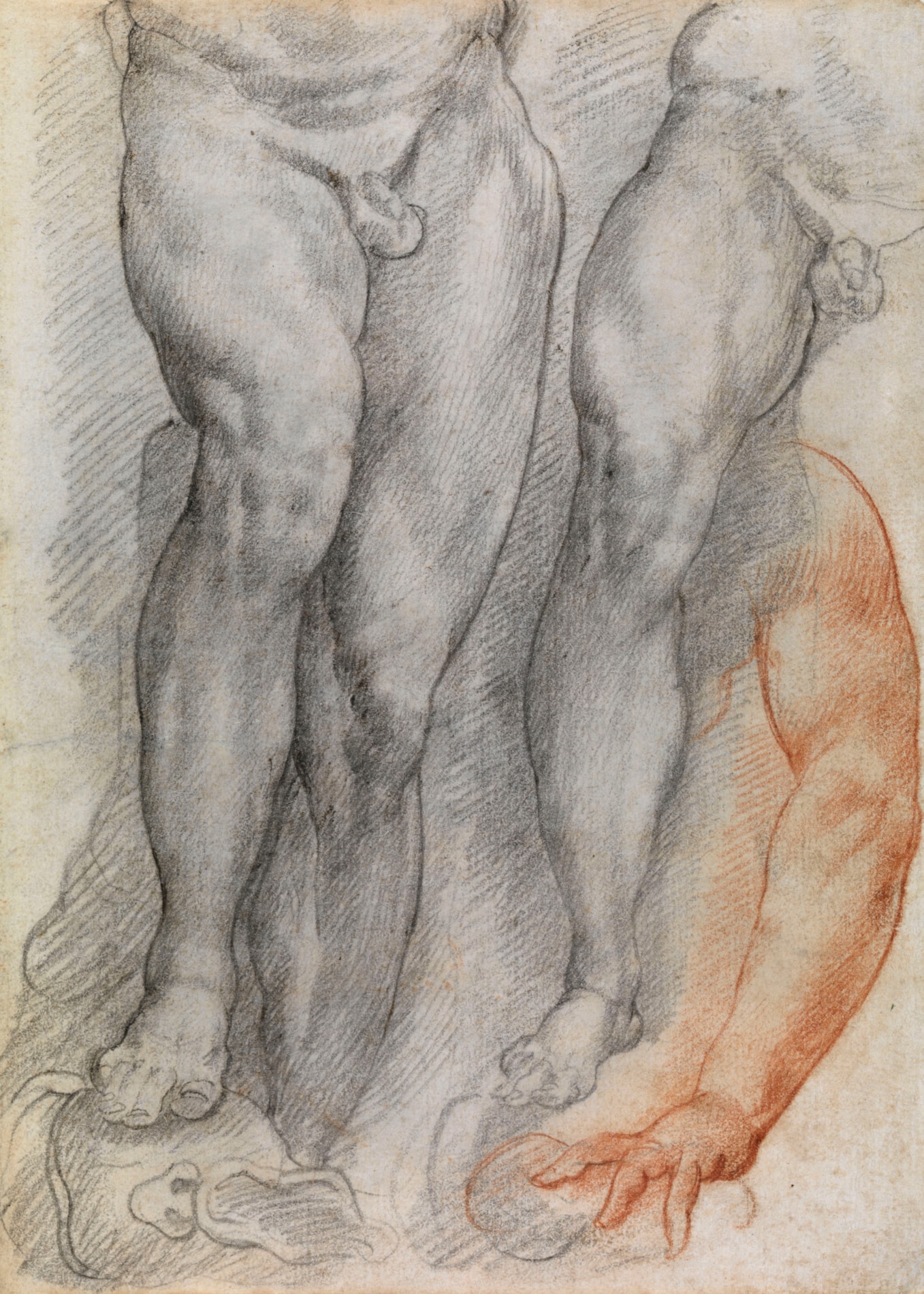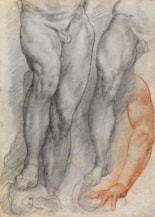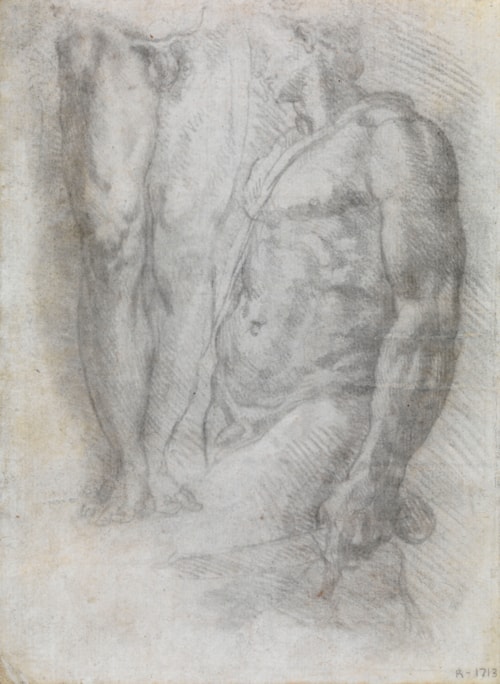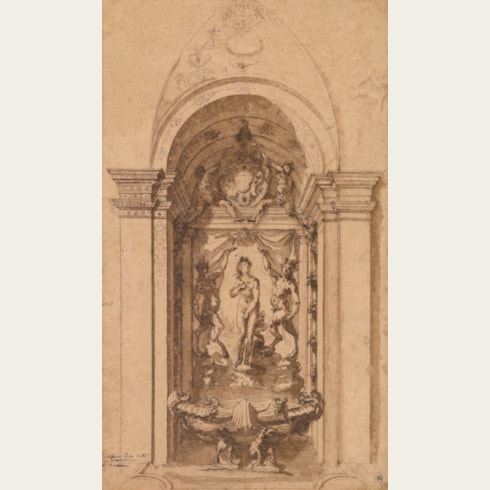Cherubino ALBERTI
(Borgo San Sepolcro 1553 - Rome 1615)
Study of Legs and an Arm [recto]; Torso of a Man Holding a Sword, and a Study of Legs [verso]
Sold
Black and red chalk.
The verso a counterproof in black chalk.
228 x 166 mm. (9 x 6 1/2 in.)
The verso a counterproof in black chalk.
228 x 166 mm. (9 x 6 1/2 in.)
This interesting sheet of studies would appear to be after an Antique or Renaissance sculpture, and indeed the position of the legs in this drawing is very close to the Hellenistic sculpture known as the Dancing Faun in the Uffizi. Although the first written reference to the sculpture dates from 1665, there is some evidence that it may have been known as early as the middle of the 16th century. Cherubino has here altered the pose of the figure to become David standing atop the severed head of Goliath.
Cherubino Alberti produced several drawn copies after the work of earlier artists, often in a combination of red and black chalk, and a number of stylistically comparable drawings of this type by him are found in an album of drawings by various members of the Alberti family, today in the collection of the Istituto Nazionale per la Grafica in Rome. Similar studies of arms are also found in a sketchbook of drawings by Cherubino Alberti, was sold at auction in London in 1976.
The verso of the present sheet is a counterproof. In preparation for an engraving, Cherubino would often make a counterproof of a figure he had drawn, in order to study the pose as it would appear in the finished print.
Cherubino Alberti produced several drawn copies after the work of earlier artists, often in a combination of red and black chalk, and a number of stylistically comparable drawings of this type by him are found in an album of drawings by various members of the Alberti family, today in the collection of the Istituto Nazionale per la Grafica in Rome. Similar studies of arms are also found in a sketchbook of drawings by Cherubino Alberti, was sold at auction in London in 1976.
The verso of the present sheet is a counterproof. In preparation for an engraving, Cherubino would often make a counterproof of a figure he had drawn, in order to study the pose as it would appear in the finished print.
A painter and engraver, Cherubino Alberti was born into a family of artists in the Tuscan town of Borgo San Sepolcro (today Sansepolcro) that included his father Alberto, his brothers Giovanni and Alessandro and his cousin Durante. He was in Rome by 1571, when he engraved a painting by Federico Zuccaro in the church of the Trinità dei Monti. It was also in Rome that he learned the art of engraving, in the studio of Cornelis Cort. Alberti produced some 180 prints, mostly reproductive works after Michelangelo, Raphael, Polidoro da Caravaggio, the Zuccari and other artists. Most of his prints date from the 1570’s and early 1580’s, after which he seems to have devoted himself mainly to painting.
Alberti's earliest documented work as a painter is a fresco decoration on the rear facade of the Vatican Library, painted in 1587. Together with his brother Giovanni, Cherubino Alberti was particularly admired for his skills as a painter of di sotto in su ceiling decorations, a talent he employed in several Roman churches. The two brothers worked together frequently, and were engaged by Pope Clement VIII on the decoration of the Sala Clementina, the largest room in the Vatican, between 1596 and 1604, and again in the sacristy of San Giovanni in Laterano, completed in 1602. The brothers also collaborated on the fresco decoration of the Oratorio del Crocifisso in the church of San Rocco in their native town of Sansepolcro. A number of other joint projects by Cherubino and Giovanni Alberti are now lost, such as the decoration of the interior of the Summer Palace on the Quirinal Hill, painted for Pope Gregory XIII between 1584 and 1585. Cherubino’s last major papal commission was the decoration of the vault of the Aldobrandini chapel in Santa Maria sopra Minerva in Rome, completed in 1610. Three years later, in 1613, he was elected principe of the Accademia di San Luca.
Provenance
Jean-François Baroni, Paris
P. & D. Colnaghi, London, in 1995
Pierre de Charmant, Geneva
His sale, Paris, Christie’s, 21 March 2002, lot 29.






